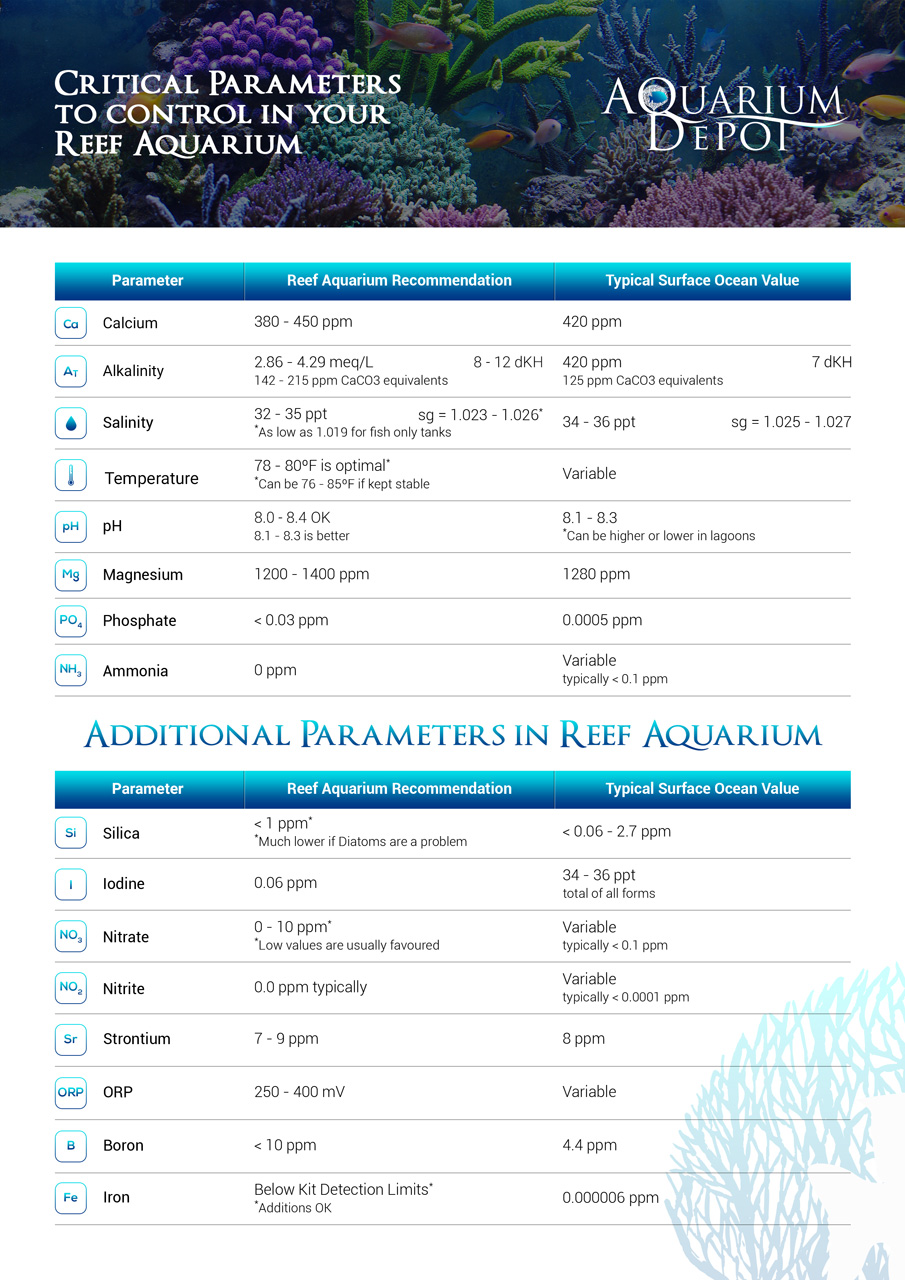Parameters

Low Light
These are corals that thrive in environments with shadowy crevices and large tanks with a few fluorescent lights. These corals can be perfect for beginners as their light requirements do not require systematic monitoring or expensive lighting that might heat your tank up. Usually, Non Photosynthetic (NPS) corals are a great fit for tank enthusiasts looking for low-light corals. Species of leather corals, mushroom corals and zoanthids are all great low-light corals. Zoanthids can be successful in all lighting conditions.
Medium Light
Medium-light corals require non-direct light for survival. They are usually photosynthetic and hence need light to make food and survive. Whereas, they do not need to be placed under bright daylight mimicking lights. They could occupy areas under partial shade or on top of small rock formations in the tank. A medium to large tank with a Halide or multi-spectrum LED setup will be a great option for them. Zoanthids and certain species of candy cane and leather corals fall into this category.
High Light
These corals thrive in shallow or brightly lit tanks with dual-tone daylight and actinic spectrum light. A hybrid Halide &/or a serial LED combo will provide these corals with light that mimics their environment. These corals are usually found in shallow reefs with clear water and hence require bright, multi-spectrum lights to be healthy. They are usually placed high up in the tank closer to the light source. Certain species of candy cane corals, acropora, scroll corals all fall in this category.
No specific needs
These are non photosynthetic corals that are versatile and can be coupled with both high and low light corals. They are best beginner corals and can thrive in a variety of tank tflow and light settings. They are fed periodically by you and are a highly rewarding option for beginners who are looking to venture into the hobby of saltwater aquariums.
Low flow
These coral types are naturally found in shallow waters where currents are not very strong. To mimic their natural environment, we need to generate a light and easy movement (flow) of water in the tanks. This can be achieved by relatively inexpensive equipment. Remember that some aquarium gadgets produce laminar currents which can be too strong for these coral types. A surge flow (from wave makers) is best suited for these corals.
Medium flow
These corals thrive in an environment with steady currents.They can be placed strategically in the tank where the current is strong but not direct. A direct strong laminar current might damage these corals. But a steady turbulent flow achieved through devices like powerheads or dump buckets are excellent choices. Make sure to place powerheads behind rocks to break flow speed as direct exposure can be too strong.
High flow
These corals are naturally found in more shallow depths and require a steady and strong current throughout the day. These corals are best fits to position in front of wave makers or in large tanks where flow rate is very high. These are a good option for more experienced hobbyists. They require a powerhead to generate strong non linear flows throughout the day. But, they add a beauty to the tank with life-like movement and colorful swaying.
Micro Mouth
Micro mouth corals are branched and tentacled and often revered for their beauty. These corals usually have branches (like the Gorgonian species) and have a tree-like appearance. Since they have the smallest mouth openings, they require live Phytoplankton or a thin blend of Reef Roid feed. When sprinkled over the coral, they bloom and consume food which makes for a beautiful sight and a colorful tank.
Small Mouth
Acropora and other hard corals like montipora are classified as small mouth corals. They are some of the most vividly colorful coral on the planet and have distinctive feeding patterns too. They do well with a mixture of a thin Reef Roid blend and phytoplankton.
Medium Mouths
Sun Corals, Hammer, Torch or Shroom Corals all fall under this category. They are very diverse in their shape and colors and are highly sustainable because of their robust nature and ability to thrive with a range of diets. They can be fed a reef roid blend or small pieces of frozen shrimp. Some species can also be trained to bloom at the same time everyday, adding to the aesthetics of the tank.
Large Mouth
These corals usually grow in larger clumps and can form the centerpieces in large tanks. They feed almost exclusively on small chunks of frozen fish, krill or Mysis Shrimp. They are large bodied and almost exclusively kept at the bottom of the tank as larger food pieces sink to the bottom. They can be surrounded by medium and small mouth corals.
